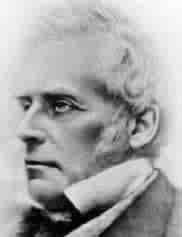|
restoring our biblical and constitutional foundations
|
What I Have Learned from the Anabaptists (Part 3)
The question that I want to sketch in this essay is one that concerns me greatly. One of the greatest threats to Christianity is Christendom. Christendom is an effort of the human race to abolish true Christianity. It does not attempt to do this overtly but under the pretext that it is genuine Christianity. I admit that here again popular beliefs of theologians and biblical scholars have perpetuated the false idea that Christendom is acceptable to God. In this whole arena of thought there is a grievous lack of any exegetical precision.
Now at the same time and in a corresponding manner, the sixteenth century Anabaptists, led not by Protestant or Reformed thought but by the Scriptures themselves, radically challenged the entrenchment of Christendom in European culture. A major difference between the Anabaptists and the Protestants was their view that the Scriptures provided models both for theology as well as for church organization. The Anabaptists were interested in restitutio, not reformatio. They considered themselves neither Protestant nor Catholic but a third way. The Bible, not tradition, provided the patterns for church organization just as plainly as it revealed the basic theological content of the faith.
The Reformers were unwilling to make such a radical
break with the past. The churches remained established and the parish
system was maintained. By contrast, the Anabaptists understood the
 example
of early Christianity to be a binding norm for Christians of all ages. A
classic example was infant baptism. The Anabaptists argued that since the
rite could not be found in the New Testament, it could not be used in a
movement trying to emulate the life of the early church. To them the rite
was non-apostolic and therefore an insidious shame to genuine
Christianity. Again, the life of Jesus was central in Anabaptist thought.
Since Jesus was fully grown when He received baptism, the rite must be an
adult matter. However – and this is a vital point – the real issue in
baptism was not simply a return to the New Testament pattern. Rather, it
involved a promise to walk in newness of life, that is, to live
according to the Word of God by refusing to let sin reign in the
mortal body. In other words, the local church, entry into which was
through baptism, was to be a community of saints. The Anabaptists
argued that without such concern for morality and genuine repentance, a
slipshod practice of spiritual laxity would inevitably result.
example
of early Christianity to be a binding norm for Christians of all ages. A
classic example was infant baptism. The Anabaptists argued that since the
rite could not be found in the New Testament, it could not be used in a
movement trying to emulate the life of the early church. To them the rite
was non-apostolic and therefore an insidious shame to genuine
Christianity. Again, the life of Jesus was central in Anabaptist thought.
Since Jesus was fully grown when He received baptism, the rite must be an
adult matter. However – and this is a vital point – the real issue in
baptism was not simply a return to the New Testament pattern. Rather, it
involved a promise to walk in newness of life, that is, to live
according to the Word of God by refusing to let sin reign in the
mortal body. In other words, the local church, entry into which was
through baptism, was to be a community of saints. The Anabaptists
argued that without such concern for morality and genuine repentance, a
slipshod practice of spiritual laxity would inevitably result.
Clearly, the Anabaptists were more interested in the New Testament than the Old. It was only the New Testament that contained the teaching of Christ and His apostles. The Old Testament was not rejected, of course. It was simply subjected to the doctrines found in the Gospels and the Epistles. According to Pilgram Marbeck, the Old Testament must be distinguished from the New Testament as the foundation must be distinguished from the house. John Kiwiet summarizes Marbeck’s hermeneutics as follows (Pilgram Marbeck [1957] pp. 101-102):
Der alte Bund war eine Zeit des Suchens und des Dürstens und erst der Neue Bund eine Zeit des Findens und Stillens. Die Verheissung an die Alten geht im Neuen Bund in Erfülling [sic]. Die Finsternis wird zu Licht und der Tod zu Leben. Es ist wie der Unterschied zwischen gestern und heute; das Alte ist vorbeigegangen, und das Neue ist gekommon.
The Old Covenant was a time of seeking and thirsting and the New Covenant a time of finding and stillness. The promise to the ancients finds its fulfillment in the New Covenant. Darkness turns to light and death to life. It is like the difference between yesterday and today; the old has gone away, and the new has arrived.
In other words, revelation was progressive and partial before Christ. Marbeck felt that the Reformers had mistaken the foundation of the house for the house itself. His two-covenant theology was based on Paul’s letter to the Galatians and the Epistle to the Hebrews, which taught that the highest court of appeal for all teaching concerning the church was the New Covenant. In short, the Scriptures must be interpreted Christologically.
Thus, for example, the Anabaptists looked with disfavor on professional pastors whose support came through tithes in the parish system. Unlike Old Testament Israel, their leaders were laymen, since Christ’s offering as High Priest was deemed to be exclusive. Their pastors, moreover, were chosen by the entire congregation according to the pattern established in the New Testament (Acts 14:23; 20:17, 28). They were supported by voluntary offerings (though many indeed supported themselves). However, support itself was not the issue. What was rejected was a salaried hierarchy. In addition, age-integrated ministry was to be practiced because this was the clear pattern of the New Testament. God has revealed Himself to His people regardless of mental capacity (Matt. 11:25) and has given His Spirit to all, regardless of age, sex, or standing in society (Acts 2:17-18). Jesus Himself taught all ages together, a classic example being the feeding of 5,000 men, “besides women and children” (Matt. 14:21). He often used children as examples of discipleship. As a young man, Jesus Himself sat “among the teachers, listening to them and asking them questions” (Luke 2:47). The church was therefore to be a believers’ church. Free churchmen placed the apostrophe after the “s” in “believers” to emphasize the communal and corporate quality of belief, in contrast to individualism.
As for the place of meeting, lavish sanctuaries were
no longer necessary since Christ had abolished the Old Testament
priesthood. John Darby, one of the founders of the Brethren church,
encouraged the
 construction
of simple chapels or assemblies with architecture that emphasized the
priesthood of all believers. Pulpits and platforms were avoided. A typical
chapel was a square room with a table and chairs for the speakers. Darby
insisted on sitting among the members during the service and standing
among them when he spoke (rather than from behind the table). The
Anabaptists denied the significance of church buildings since physical
structures were irrelevant to God. The buildings themselves were emblems
of mere formalism. Large stone structures could never replace the true
church of Christ that is comprised of two or three living stones gathered
in His Spirit. They felt that with the addition of large numbers of
extravagant temples the church had compromised with worldly standards of
success. The Anabaptists energetically condemned this “externalization” of
the Body of Christ.
construction
of simple chapels or assemblies with architecture that emphasized the
priesthood of all believers. Pulpits and platforms were avoided. A typical
chapel was a square room with a table and chairs for the speakers. Darby
insisted on sitting among the members during the service and standing
among them when he spoke (rather than from behind the table). The
Anabaptists denied the significance of church buildings since physical
structures were irrelevant to God. The buildings themselves were emblems
of mere formalism. Large stone structures could never replace the true
church of Christ that is comprised of two or three living stones gathered
in His Spirit. They felt that with the addition of large numbers of
extravagant temples the church had compromised with worldly standards of
success. The Anabaptists energetically condemned this “externalization” of
the Body of Christ.
Finally, in Anabaptism appeal was made to the plain man’s judgment, unspoiled by the university. Those who toiled with their hands (craftsmen) or who worked in the soil (peasants) were presumed to be more receptive and teachable than those who had been corrupted by the folly of worldly wisdom. Here a certain irony arises, of course, for among the radical thinkers of Anabaptism there were not a few university trained men whose knowledge of the Scriptures and of the original languages of the Bible were unsurpassed. I cannot refrain here from referring to my fellow Basler Conrad Grebel, who studied at the Grossmünster in Zürich for six years before becoming one of the 81 students to register at the University of Basel in the winter semester of 1514. At Basel he lived in the bursa (college) that was under the direction of the city’s leading humanist scholar, Heinrich Loriti (Glarean). From Basel he traveled to Vienna to continue his studies, and thence to Paris. Perhaps the Dissenters’ attitude toward scholarship was based to a degree upon their work ethic. Hard work was considered a virtue. The peasant who worked with his own hands in cooperation with God’s nature was thought to have keener insight than the scribe with his multitude of books. For instance, the Anabaptists might argue: “How can those who know the Master miss His simple and straightforward words in Matthew 23 condemning the use of honorific titles?” To the Anabaptists, use of such titles seemed the very culmination of worldliness and power. Their message was simple: Let the Reformers cling to the old ideas of Christendom. We will seek a thoroughgoing restitution of the church as she had been before the rise of Constantine.
In conclusion, it is interesting to note that William
Tyndale considered the chief cause of all the trouble in the church of his
day to be the fact that the Scriptures of God were hidden from the
people’s eyes.
 He
thus gave the world its first English New Testament translated directly
from the original Greek. We may well ask why such an act deserved the
implacable hatred of the church hierarchy. Tyndale was deemed a heretic
because he challenged the established ideas of his day. For example, he
translated the Greek word presbuteros as “elder” instead of
“priest,” the word ekklesia as “congregation” instead of “church,”
and the word metanoia as “repentance” instead of “penance.” The
Roman Church, built on penance and holy orders, could not tolerate such a
“blasphemer” and “heretic.”
He
thus gave the world its first English New Testament translated directly
from the original Greek. We may well ask why such an act deserved the
implacable hatred of the church hierarchy. Tyndale was deemed a heretic
because he challenged the established ideas of his day. For example, he
translated the Greek word presbuteros as “elder” instead of
“priest,” the word ekklesia as “congregation” instead of “church,”
and the word metanoia as “repentance” instead of “penance.” The
Roman Church, built on penance and holy orders, could not tolerate such a
“blasphemer” and “heretic.”
In a similar way, the sixteenth century Anabaptists challenged the Catholic, Lutheran, and Reformed establishments. Centuries later Barth and Brunner would question the church-state system from within. Why, then, should it surprise us today when churchmen engage in responsible criticism of their own denominations? The goal of the Anabaptists, as has often been said, was to cut the tree back to the root and thus free the church of the suffocating growth of ecclesiastical tradition. That this goal is being revived in our day should be the cause of great rejoicing.
July 28, 2007
David Alan Black is the editor of www.daveblackonline.com.